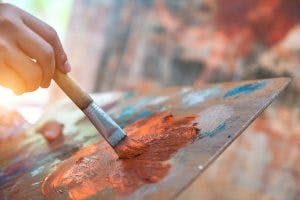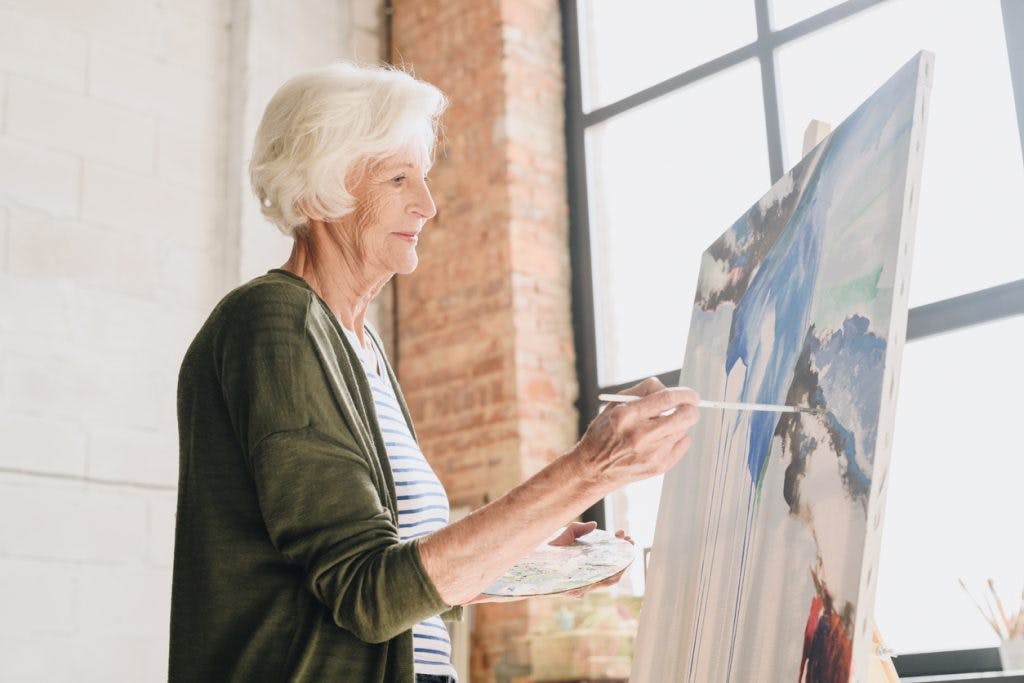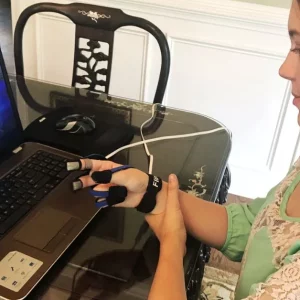There are many creative ways to treat the secondary effects of a traumatic brain injury (TBI). One effective method is through art therapy.
According to the American Art Therapy Association, art therapy includes using “active art-making, the creative process, and applied psychological theory…to enrich the lives of individuals, families, and communities.” Art therapy for brain injury patients is a great way to enhance cognitive and emotional skills and improve overall wellbeing.
If you want to learn more about this awesome therapy for TBI patients, keep reading!
Art Therapy for TBI Recovery
Art therapy for brain injury patients is a personalized therapy approach that can help strengthen cognitive function and emotional resilience.
While art has helped people find peace and inner healing for millennia, it was only in the mid-twentieth century that art was accepted as a valid therapeutic approach to treating brain injury.
The great thing about art therapy is that it engages both the right and left hemispheres of the brain. In fact, in a recent study, researchers found that art, specifically drawing, activates multiple areas in each hemisphere.
This has huge implications for brain injury patients, since one of the main goals in TBI recovery is to stimulate the brain and activate neuroplasticity, the brain’s natural mechanism for healing itself.
The more you stimulate the brain, the more the brain can form and strengthen neural pathways that repair the damage done to it. This means creating art can literally help heal your brain.
Besides the fact that art therapy activates neuroplasticity, there are many other benefits that it offers for brain injury patients. We’ll look at those in the section below.
Benefits of Art Therapy for Brain Injury Patients
The following are some of the best reasons to try art therapy for brain injury.
1. Sharpen fine motor skills and visual perception

Handling paint on a paintbrush can help improve fine motor coordination and precision. These skills can transfer to other areas of your life, such as eating and other activities involving using utensils in a coordinated manner.
Working on fine details while painting also improves your hand-eye coordination. Plus, painting helps you develop stronger perception skills, since you’ll need to learn how to make 2-D objects look three-dimensional.
2. Improve concentration and attention
Art therapy, whether it involves painting, drawing, or taking a pottery class, requires heavy concentration.
You not only need to concentrate on making a flower the right shape, but you also have to keep in mind where it belongs in relation to the rest of the painting.
This will help you improve your ability to focus for longer periods of time and teach you to keep more than one thing in your mind at once.
You might find this hard at first, but the more you practice, the easier it will become.
3. Boost problem-solving skills
Art might look easy, but it actually takes a lot of hard thinking.
Unless you’re a natural artist, your painting is not going to come out perfectly on the first try. This means you must know how to identify problems in your painting or drawing and find creative solutions.
Again, this won’t happen right away. You probably will get frustrated a lot in the beginning. But art therapy gives you a safe place to develop your problem-solving skills and learn how to work through disappointment.
4. Relieve symptoms of depression and build social skills

Art therapy has been shown to help combat the chemical imbalances that cause depression.
According to one study, brain injury survivors are nearly 11 times more likely to experience depression in the first year after brain injury than the general population. Therefore, it is critical to find effective methods to combat and/or prevent depression among brain injury survivors. Art therapy can be a great way to do so!
Because it often takes place in groups, art therapy also gives brain injury survivors a chance to rebuild their social skills and form friendships, which is key to making a good recovery.
5. Improve self-management and self-esteem
One of the best reasons to try art therapy after brain injury is it gives you a space where for once, you are in control.
You get to decide what to create, and how to create it. This helps you practice decision making and gives you back some autonomy, which will also boost your self-esteem.
Do you want to paint a landscape with grass and trees and mountains? Go ahead! Do you want to just have fun and mix a bunch of colors together? You can do that too!
There are no wrong answers here; that’s the beauty of art.
6. Increase mental flexibility and perseverance
Painting almost never goes the way you planned. You might run out of the right color, you might have used the wrong brush, or drawn things too big. But mistakes can provide an excellent opportunity to improve mental flexibility. If something doesn’t look right, you can figure out how to fix it through problem-solving skills, mental flexibility and perseverance.
Doing this often enough will help you develop more flexibility and creativity in the rest of your life as well. You’ll learn not to get too attached to things, since when you’re painting you always have to be prepared to wipe it out and start over.
In short, art therapy teaches you how to deal with unexpected problems in a healthy way. All of that makes it a worthwhile activity for patients after brain injury.
7. Overcome emotional barriers

Sometimes it’s hard to talk openly about your feelings, especially after a brain injury. That’s where art comes in.
Art therapy is a cathartic experience that lets you access feelings deep within your subconscious. It can help you work through any emotional problems you might have in a constructive, non-threatening way.
That’s why so many psychologists prescribe art therapy to their patients suffering PTSD.
In fact, many patients find it helpful to express themselves through painting. They might use colors to represent their feelings, or draw an image that means a lot to them.
Sometimes just the act of immersing yourself in something else for a while, without having to worry about what others think, is enough to relieve feelings of anxiety and anger.
Effects of Art Therapy for Brain Injury Survivors
Over the years, researchers have been examining the use of art therapy to treat a number of conditions. Here are some of the helpful effects of art therapy for brain injury that have been uncovered:
- A 2019 study looking at art therapy in a group setting found that it increased socialization and improved the participants’ emotional states.
- This 2020 study determined that group art therapy in conjunction with psychotherapy could help survivors learn to adapt to challenging life experiences, improve social function, reduce depression symptoms, and learn to better regulate their emotions.
- Another 2020 study found that long-term art therapy, administered over approximately 2 years, could address frustration tolerance, grief and loss, emotion regulation, personal insight, resiliency, and trauma processing among military service members with both TBI and PTSD.
With its many benefits, it is easy to see how art therapy could benefit TBI survivors. If you are interested in art therapy, consider using this locator to find an art therapist near you!
Finding Hope through Art Therapy for Brain Injury Patients
As you can see, art therapy offers many psychological and cognitive benefits for patients after a traumatic brain injury.
Not only does art activate neuroplasticity, it can help improve your mood, problem-solving skills, attention, and coordination.
Most importantly, art helps patients find a healthy outlet for their emotions, and rebuild their sense of self, something few other therapies can offer after a traumatic brain injury.
We hope this article inspires you to add art therapy to your life and find hope after your injury.









